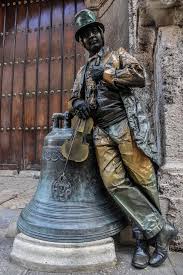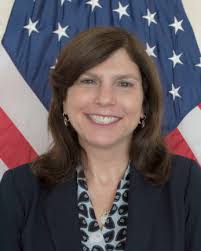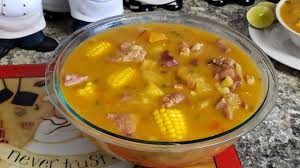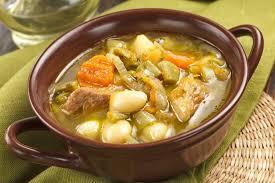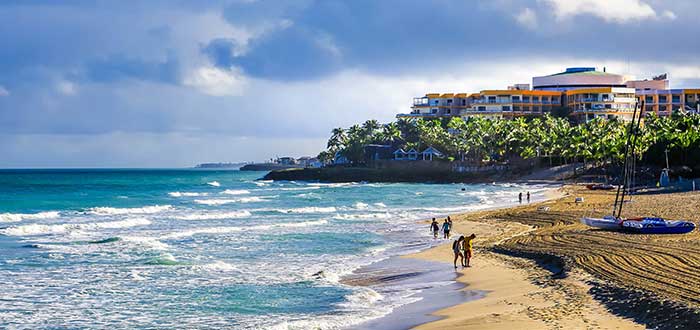 LA HABANA VIEJA, CUBA Y SUS ESTATUAS VIVIENTES. VIDEOS.
LA HABANA VIEJA, CUBA Y SUS ESTATUAS VIVIENTES. VIDEOS.
Estatuas vivientes añaden atractivos a la Habana Vieja, donde perduran reliquias arquitectónicas, muchas de las cuales datan de la época colonial.
Las estatuas vivientes, parte del paisaje urbano en muchos países del mundo, han cobrado auge en los últimos años en Cuba.
Se trata de una manifestación del llamado arte urbano o de la calle, cuya génesis se asocia las antiguas civilizaciones griegas y egipcias, de moda en ciudades de Argentina, España y otras modernas urbes.
Cuba posee un gran movimiento teatral que se dedica a fomentarla y se disemina por los centros históricos de La Habana, Santiago de Cuba, Matanzas, Cienfuegos o Trinidad, entre otras.
Particularmente en La Habana Vieja, Patrimonio de la Humanidad desde 1982, constituyen todo un espectáculo teatral.
COMIENZA EL ARTE DE LAS ESTATUAS VIVIENTES EN CUBA.
Comenzó a desarrollarse este arte, a partir de los años 2000, pero sobre todo en obras teatrales cerradas.
En 2005, gracias al grupo teatral Gigantería y a la Oficina del Historiador de La Habana, se expandió por la ciudad y por el resto del país.
https://youtu.be/ducRRJHVzSM
En la actualidad, realizan actividades no solo en las calles, sino también en escuelas y hospitales, sobre todo para los niños y jóvenes.
Los jóvenes artistas, devenidos magos del disfraz y la paciencia, dedican parte del día a la preparación de su atuendo y maquillaje, para poder permanecer inertes durante horas al sol, ante la mirada de asombrada de transeúntes cubanos y extranjeras.
Estos hombres y mujeres logran seducir a partir de los gestos lentos de su propio cuerpo, y en su piel ponen diversos materiales, con maquillajes y pinturas acrílicas con colores: el oro, la plata, la roca e, incluso, la madera. Al disfraz, le añaden artículos propios para su interpretación.
Nace, desde la inmovilidad inadvertida, un museo viviente a la intemperie, donde escenifican a personalidades excelsas de la cultura cubana. No escapa la interpretación de estrafalarios personajes, que pueden ir desde un cansado campesino hasta un pirata amenazante.
En cualquier esquina del bulevar de la calle Obispo, los transeúntes pueden encontrarse con el Caballero de París, personaje ambulante que recorrió muchos años las calles de La Habana en la segunda mitad del pasado siglo. Los que la ven por primera vez sospechan algo raro, pero no atinan a saber qué es. La sorpresa llega cuando, de repente, la estatua se mueve. No es de bronce, sino de carne y hueso, un hombre que diariamente viste las añejas ropas que semejan a las de El Caballero y se maquilla para dar vida a la estatua que lo representa.
Entre otros personajes encarnados, figuran La Giraldilla, símbolo de La Habana desde hace siglos; el caricaturesco Charles Chaplin; el flautista de Hamelín, de las legendarias fábulas de los Hermanos Grimm, por citar algunos.
En la actualidad, muchos trabajan de manera independiente, con el apoyo de la Oficina del Historiador de la Ciudad de La Habana. Algunos ya tienen sus personajes creados y sus espacios de exhibición, pero constantemente buscan renovarse y crear nuevos personajes.
Mirémoslos como seres fantásticos que parecen acomodarse tranquilamente a la urbe de cinco siglos de fundada, una de las Siete Ciudades Maravillas del Mundo Moderno.
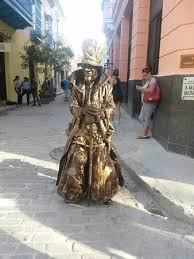 OLD HAVANA, CUBA, AND ITS LIVING STATUES. VIDEOS.
OLD HAVANA, CUBA, AND ITS LIVING STATUES. VIDEOS.
Living statues add attractions to Old Havana, where architectural relics persist, many of which date back to colonial times.
Living statues, part of the urban landscape in many countries of the world, have grown in popularity in recent years in Cuba.
It is a manifestation of the so-called urban or street art, whose genesis is associated with the ancient Greek and Egyptian civilizations, fashionable in cities of Argentina, Spain and other modern cities.
Cuba has a great theatrical movement that is dedicated to promoting it and is spread throughout the historic centers of Havana, Santiago de Cuba, Matanzas, Cienfuegos, or Trinidad, among others.
Particularly in Old Havana, a World Heritage Site since 1982, they constitute a whole theatrical spectacle.
THE ART OF LIVING STATUES BEGINS IN CUBA.
This art began to develop in the 2000s, but especially in closed plays.
In 2005, thanks to the Gigantería theater group and the Office of the Historian of Havana, it expanded throughout the city and the rest of the country.
Currently, they carry out activities not only in the streets but also in schools and hospitals, especially for children and young people.
The young artists, become magicians of disguise and patience, dedicate part of the day to preparing their clothes and makeup, to be able to remain inert for hours in the sun, before the astonished gaze of Cuban and foreign passers-by.
These men and women manage to seduce from the slow gestures of their own bodies, and on their skin, they put various materials, with makeup and acrylic paints with colors: gold, silver, rock, and even wood. To the costume, they add their own articles for their interpretation.
A living museum in the open is born, from inadvertent immobility, where exalted personalities of Cuban culture are staged. The interpretation of quirky characters does not escape, which can range from a tired peasant to a menacing pirate.
On any corner of the Obispo street boulevard, passersby can meet the Caballero de Paris, a traveling character who walked the streets of Havana for many years in the second half of the last century. Those who see it for the first time suspect something strange but do not know what it is. The surprise comes when, suddenly, the statue moves. It is not made of bronze, but of flesh and blood, a man who daily wears old clothes that resemble those of El Caballero and puts on makeup to give life to the statue that represents her.
Among other characters incarnated are La Giraldilla, a symbol of Havana for centuries; the cartoonish Charles Chaplin; the Pied Piper of Hamelin, from the legendary Fables of the Brothers Grimm, to name a few.
Today, many work independently, with the support of the Office of the Historian of the City of Havana. Some already have their characters created and their exhibition spaces, but they constantly seek to renew themselves and create new characters.
Let’s look at them as fantastic beings who seem to calmly settle into the five-century-old city, one of the Seven Wonder Cities of the Modern World.
Agencies/ RHC/ Guadalupe Yaujar/ Maite González/ Internet Photos/ Arnoldo Varona/ www.TheCubanHistory.com
THE CUBAN HISTORY, HOLLYWOOD.







